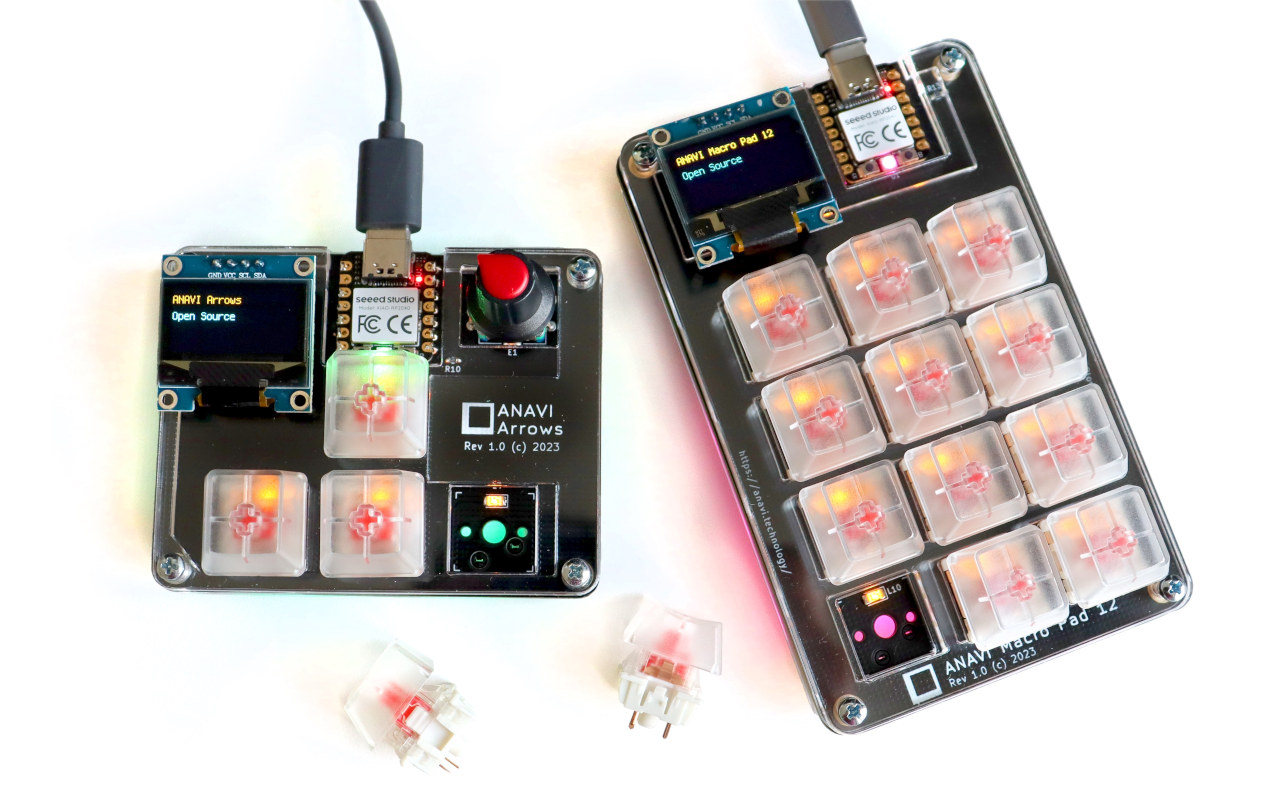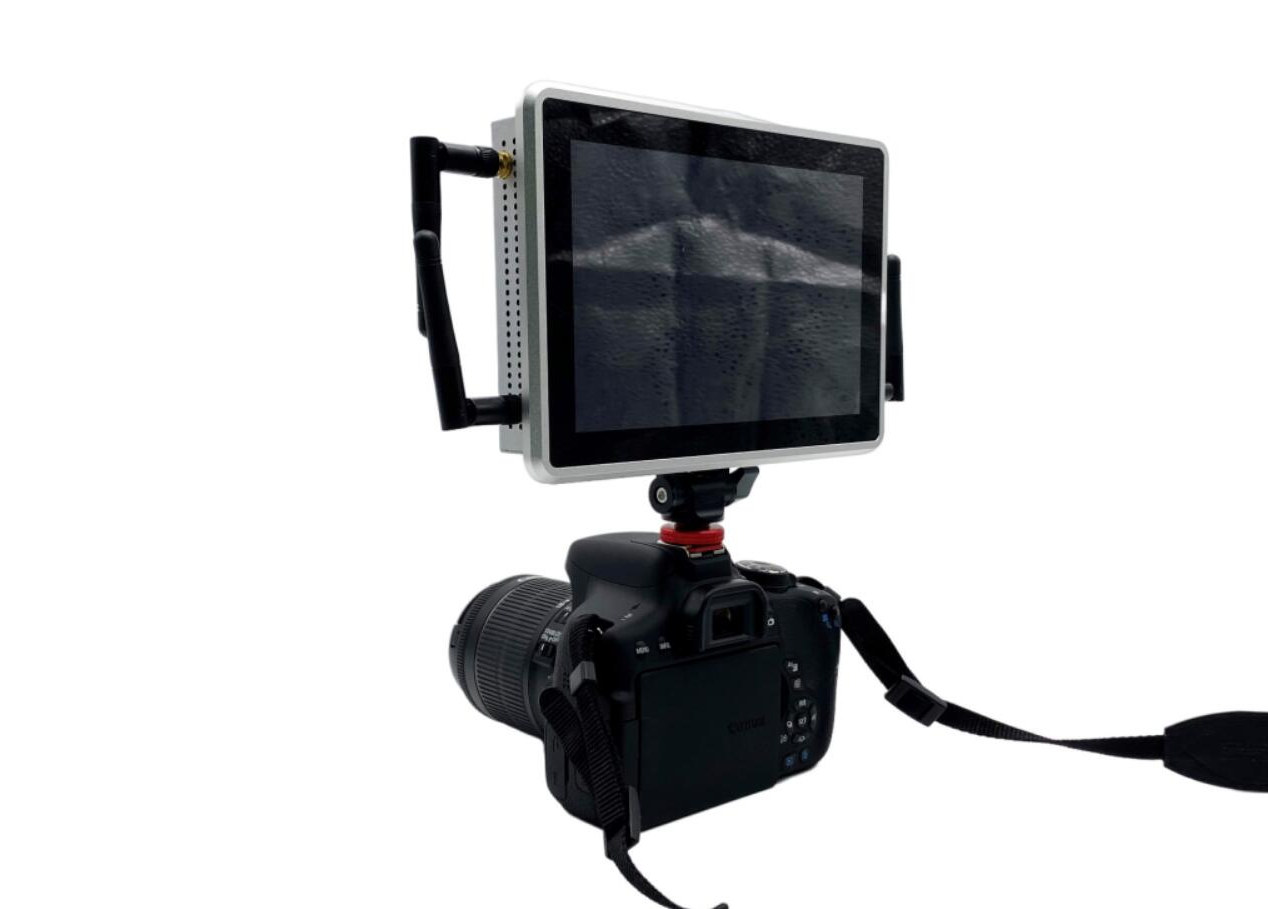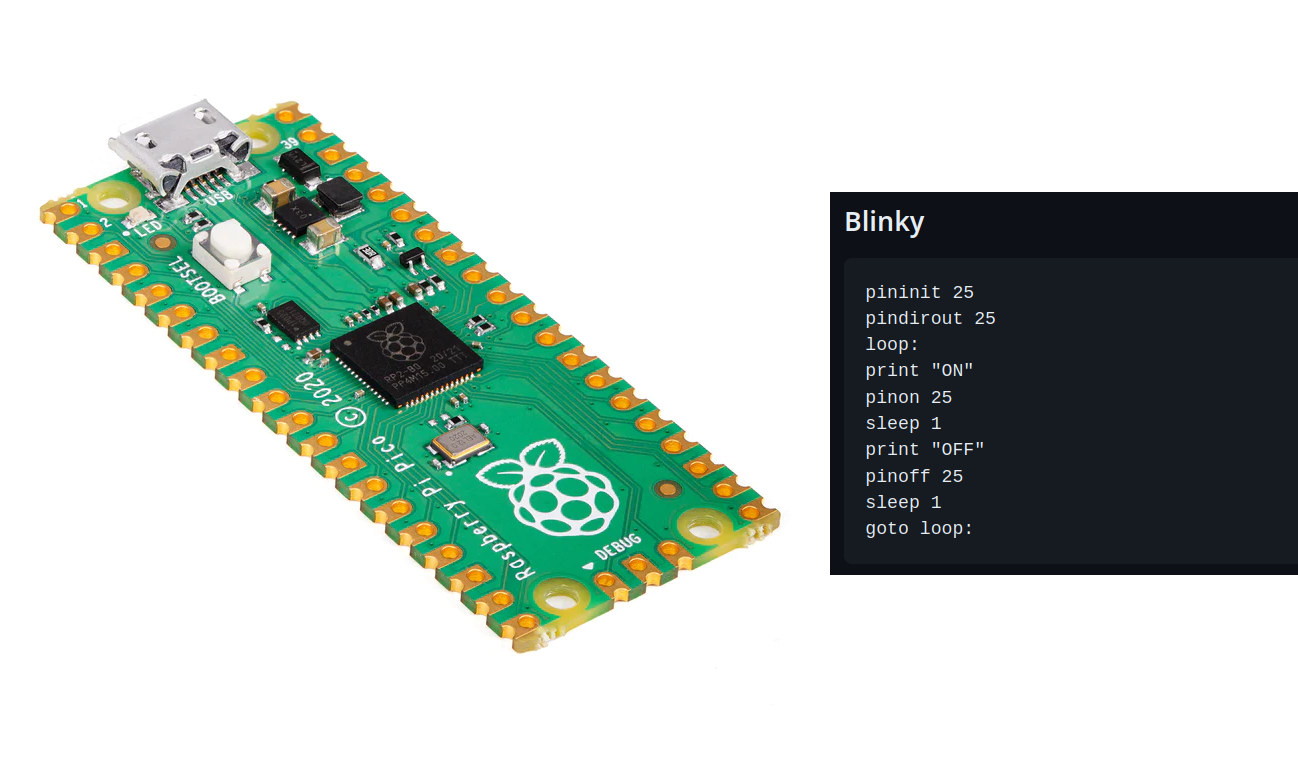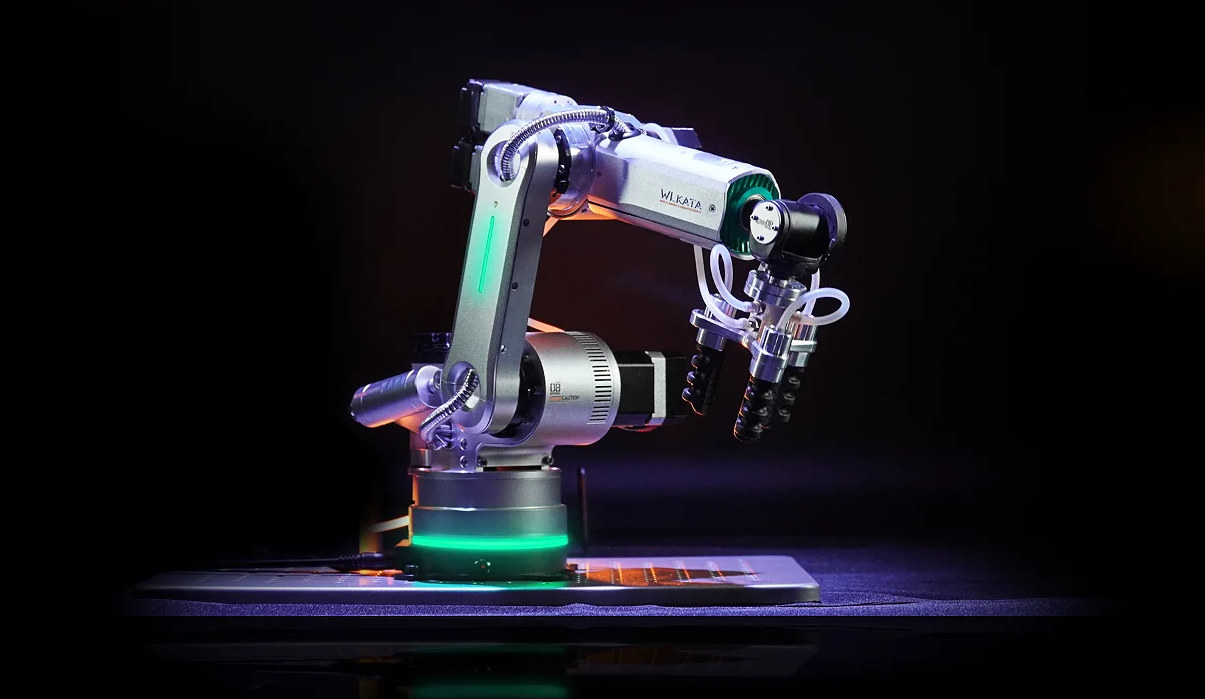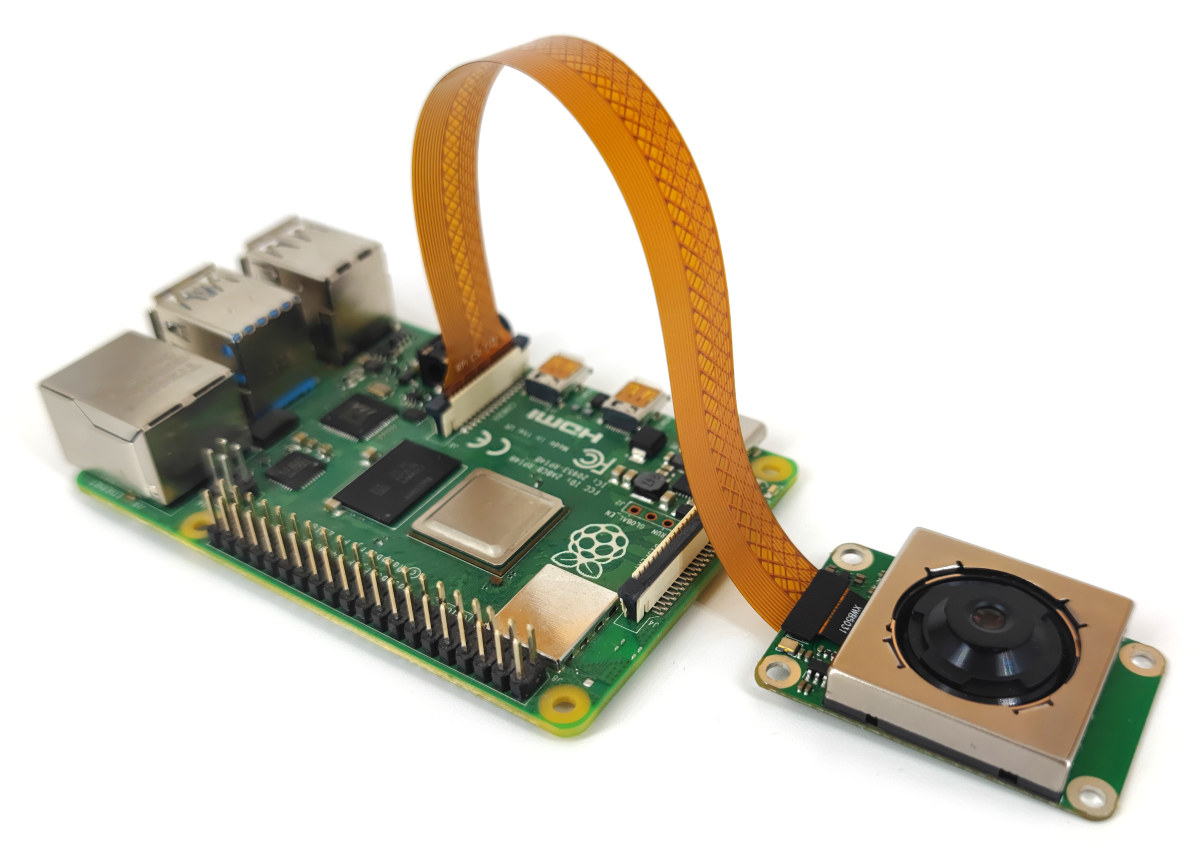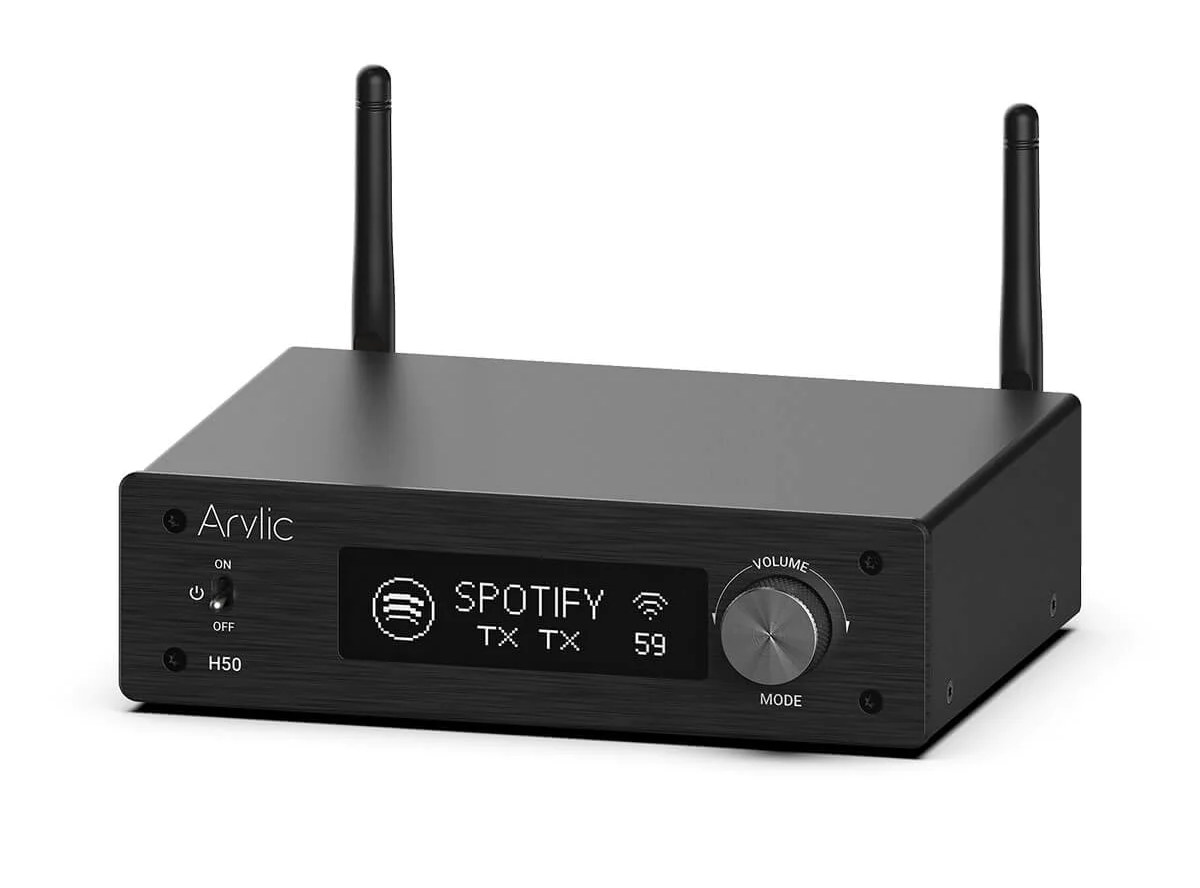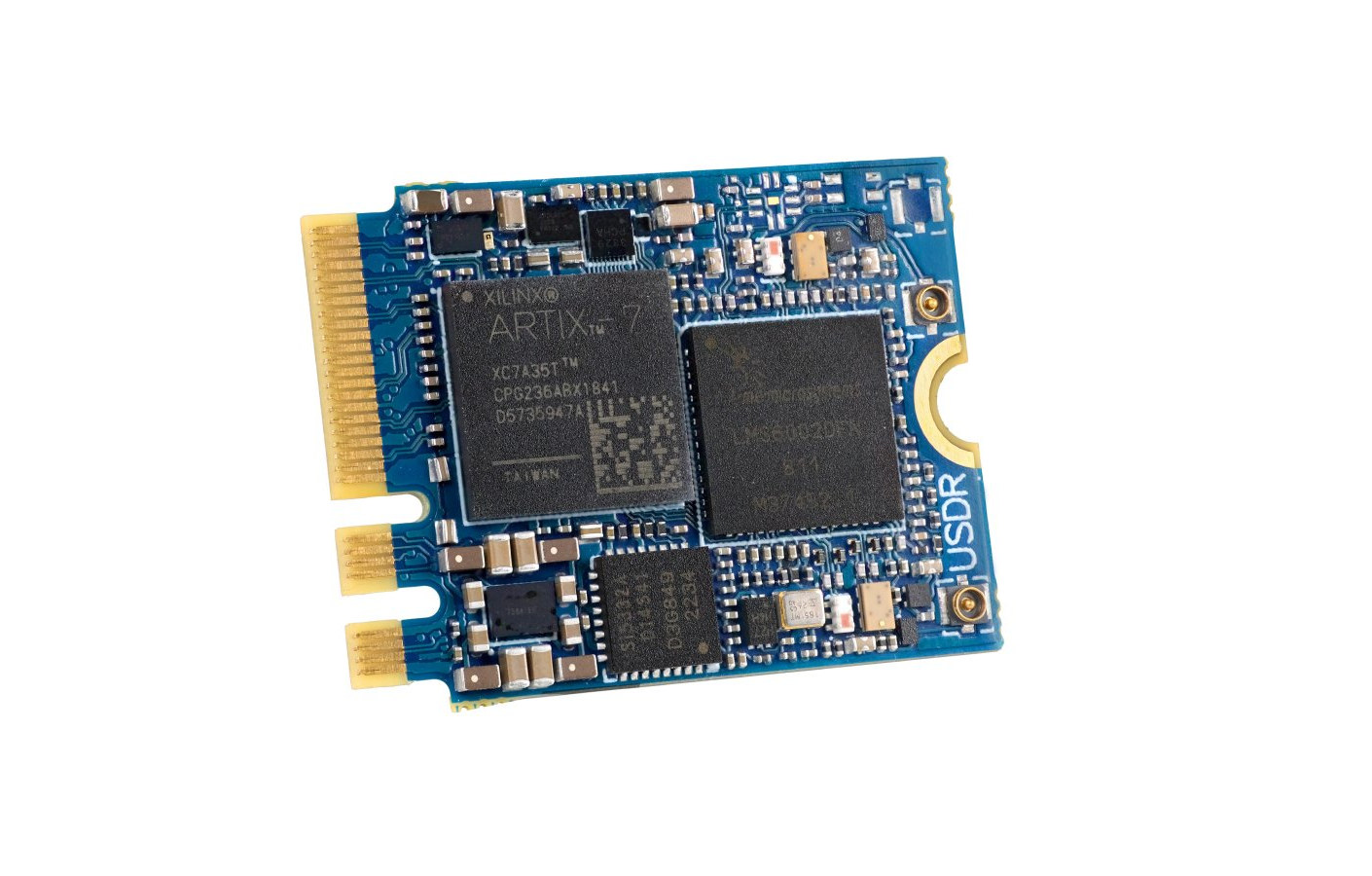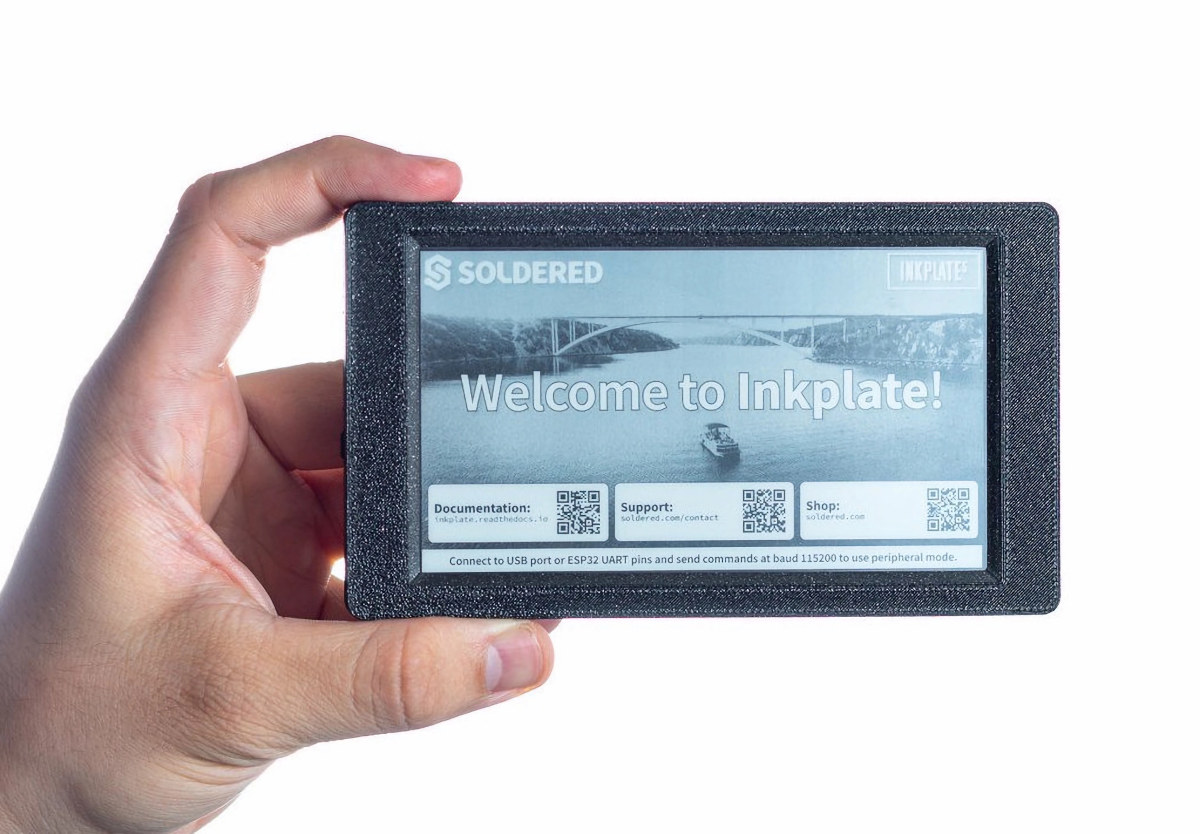ANAVI Technology has launched two more open-source hardware mechanical keyboards based on the Raspberry Pi RP2040 microcontroller, equipped with an OLED display, and programmable with CircuitPython: the ANAVI Macro Pad 12 with 12 keys and the ANAVI Arrows with four keys and a rotatory encoder. The new mechanical keyboards follow ANAVI Macro Pad 10 & Knobs input devices equipped with the same Seeed Studio XIAO RP2040 MCU module running the KMK firmware written with CircuitPython, but with different form factors and features. ANAVI Macro Pad 12 specifications: MCU module – Seeed Studio XIAO RP2040 with Raspberry Pi RP2040 dual-core Cortex-M0+ microcontroller @ up to 133 Mhz with 264KB SRAM, 2MB SPI flash, USB Type-C port Keys – 12x Gateron red, linear, non-clicky mechanical switches and transparent keycaps with yellow LED backlighting Display – OLED display connected to I2C slot (can be replaced with another I2C module) Host interface – USB […]
Mekotronics A58 – A 7-inch display with Rockchip RK3588 SoC and a DSLR camera mount for live streaming
Mekotronics A58 7-inch smart display is powered by a Rockchip RK3588 SoC with up to 16GB RAM and 128GB eMMC flash, and ships with a DSLR camera mount to enable video broadcasting and live streaming on social platforms. In the past, we’ve covered several Rockchip RK3588-powered Arm mini PCs by Mekotronics such as the R58, R58X, and more recently the R58X-Pro and R58X-HDD models, but the company has now leveraged its experience with the platform by launching a 7-inch smart display that can be used for live-streaming, but as we’ll see from the specifications below can also find many other uses. Mekotronics A58 specifications: SoC – Rockchip RK3588 octa-core processor with four Cortex-A76 cores @ 2.4 GHz, four Cortex-A55 cores @ 1.8 GHz, an Arm Mali-G610 MP4 GPU, a 6TOPS NPU, 8K 10-bit decoder, 8K encoder System Memory – 4GB, 8GB, or 16GB LPDDR4X Storage 32GB, 64GB, or 128GB eMMC […]
PiccoloBASIC – A BASIC interpreter for the Raspberry Pi Pico board
PiccoloBASIC is an open-source BASIC interpreter for the Raspberry Pi Pico development board that’s based on “uBASIC: a really simple BASIC interpreter” by Adam Dunkels and relying on Arm’s LittleFS fail-safe filesystem for microcontrollers. If my memory serves me well, my first computing experience was at school using a Thomson TO7 computer that we programmed with BASIC. I don’t think the language is still used in practical applications, but we can still see some BASIC projects pop up from time to time such as a BASIC interpreter for the Arduino Zero boards. Gary Sims, owner of the Gary Explains YouTube channel, has now ported a BASIC interpreter to the Raspberry Pi Pico. The project is still work in progress, but currently implemented features include: Let, if, print, for, goto, gosub String variables (let z$=”hello”) Floating point numbers and variables (let z#=1.234) Builtin functions [zero, randint, not, time] Sleep, delay, […]
WLKATA Robotics Haro380 is a high precision industrial 6-Axis mini robotic arm (Crowdfunding)
WLKATA Robotics’ Haro380 is a high-precision industrial 6-axis mini robotic arm that can carry a payload of up to 500 grams and designed for education, engineering projects, and light manufacturing. We’ve covered some desktop robotic arms in the past such as the myCobot 280 Pi, but the HARO380 goes a step further with 0.05mm repeatability, a 6-axis harmonic reducer, and zero backlash. It is an upgraded version of the company’s entry-level Mirobot robotic arm introduced in 2019. Haro380 specifications and key features: Control board Unnamed MCU Base interface – RS485, DC power, expansion interface, USB interface I/Os – 2x digital inputs, 2x digital outputs Emergency switch Supply voltage – 24V DC Temperature Range – 5 to 40°C Humidity – 20 to 75% RH non-condensing 6-axis harmonic reducer Magnetic end effectors Repeatability – +/- 0.05 mm Max payload – 500 grams Reach – 380 mm Control interfaces – USB to serial, […]
8K 50MP camera module targets NVIDIA Jetson, Raspberry Pi, and RK3588 boards (Crowdfunding)
RBTS.co’s C50M camera module is equipped with the same 8K 50MP Samsung ISOCELL GN2 image sensor found in the upcoming Google Pixel 8 Pro smartphone but targets the maker market with support for NVIDIA Jetson, Raspberry Pi, and Rockchip RK3588 boards. With high-resolution and quick focusing ability, this camera sensor is designed for drones, machine vision, and industrial automation applications such as automated optical inspection and preventive maintenance, and the large 1.4μm pixels of the Samsung ISOCELL GN2 sensor are said to make the camera work well in low-light conditions. C50M camera module specifications: Effective Resolution – 8,160 x 6,144 (50MP) Pixel Size – 1.4μm (2.8μm with 12.5MP binning) Optical Format – 1/1.12″ sensor Color Filter – Dual Tetrapixel RGB Bayer Pattern Frame Rate – 30fps @ 50MP, 120fps @ 4K and 480fps @ FHD ADC Accuracy – 10-bits Chroma – Tetra Auto Focus – Dual Pixel Pro (PDAF); range: […]
Arylic H50 wireless stereo amplifier supports Airplay2, Amazon Alexa (Sponsored)
Arylic H50 is a new wireless stereo amplifier with an ESS9023p Sabre DAC and support for Airplay2, Amazon Alexa, and services such as Spotify Connect and Tidal Connect. It offers dual-band WiFi 4 connectivity, and Bluetooth 5.2 audio support through a Qualcomm QCC3040 SoC with aptX HD, supports 50W stereo speakers, and plenty of audio input sources from analog and digital audio ports to HDMI ARC, as well as NAS (DLNA) function and USB mass storage. Arylic H50 specifications: SoC – Qualcomm QCC3040 with 32-bit application processor @ 32 MHz, 32-bit system processor @ 32 MHz, Kalimba DSP @ 120 MHz, Bluetooth 5.2 and aptX HD support. DAC – ESS9023p Sabre DAC Display – 2.23-inch OLED display panel Connectivity 10/100M RJ45 port Dual-band (2.4GHz/5.0GHz) WiFi 4 (802.11 b/g/n) Bluetooth 5.2 with up to 15m range, suppport for aptX-HD, aptX-LL, aptX-AD, SBC, AAC Streaming Protocols – Works with Alexa, Spotify Connect, […]
uSDR – A tiny M.2 SDR board controllable from your web browser (Crowdfunding)
uSDR is an embedded software-defined radio (SDR) M.2 board based on an AMD Embedded Artix-7 FPGA and designed to be controlled in the Chrome, Opera, or Edge browser without specific drivers or software thanks to WebUSB technology. The module can be inserted into any compatible host, or through M.2, USB, mini PCIe or PCIe adapters, and used from a web browser with ready-to-use applications such as a spectrum monitor or a signal analyzer, or your own JavaScript, C/C++, Rust, Go, or C# application thanks to WebAssembly and the Emscripten project. uSDR specifications: RFIC – Lime Microsystems LMS6002D programmable RF (FPRF) transceiver IC operates from 300MHz to 3.8GHz FPGA – AMD Embedded XC7A35T (Artix-7) FPGA with 33,280 logic cells Full-duplex TX & RX Frequency range – 300 – 3700 MHz (usable range typically starts from 230 MHz) RX/TX Bandwidth – 0.75 – 28 MHz plus bypass mode Clock generator – SI5332A […]
Inkplate 5 – A 5.2-inch wireless e-paper display programmable with Arduino or MicroPython (Crowdfunding)
The team at Soldered Electronics has been designing Inkplate ESP32-based e-paper displays ever since the first 6-inch model was launched in 2019. The latest Inkplate 5 comes with a recycled 5.2-inch E-Ink (e-paper) display with refresh times of only 0.19 seconds, and programmable with the Arduino IDE or MicroPython firmware. The WiFi-connected display offers a 960×540 resolution, or 213 DPI pixel density, integrates an RTC with battery for accurate timekeeping, two buttons for power and wake/user, and I/O expansion via headers and an easyC/Qwicc connector. Inkplate 5 specifications: Wireless module – Dual-core ESP32 processor with Wi-Fi 4 & Bluetooth 4.0 (BLE) connectivity, 8MB flash, 4MB PSRAM External storage – MicroSD card socket Display – 5.2-inch, 960×540 e-paper display with 213 DPI pixel density Refresh times: full refresh in just 1.02s (1-bit and 3-bit) and partial refresh in 0.19s (1-bit) USB – 1x USB Type-C port for programming and power Expansion […]


